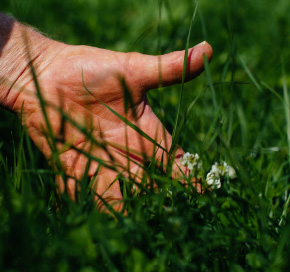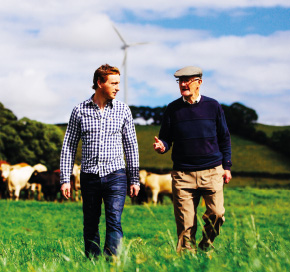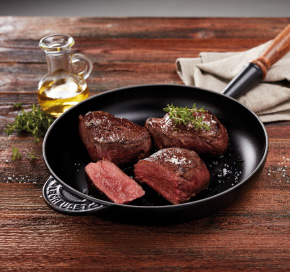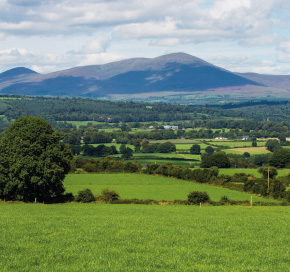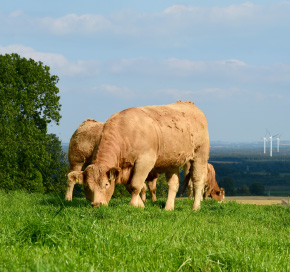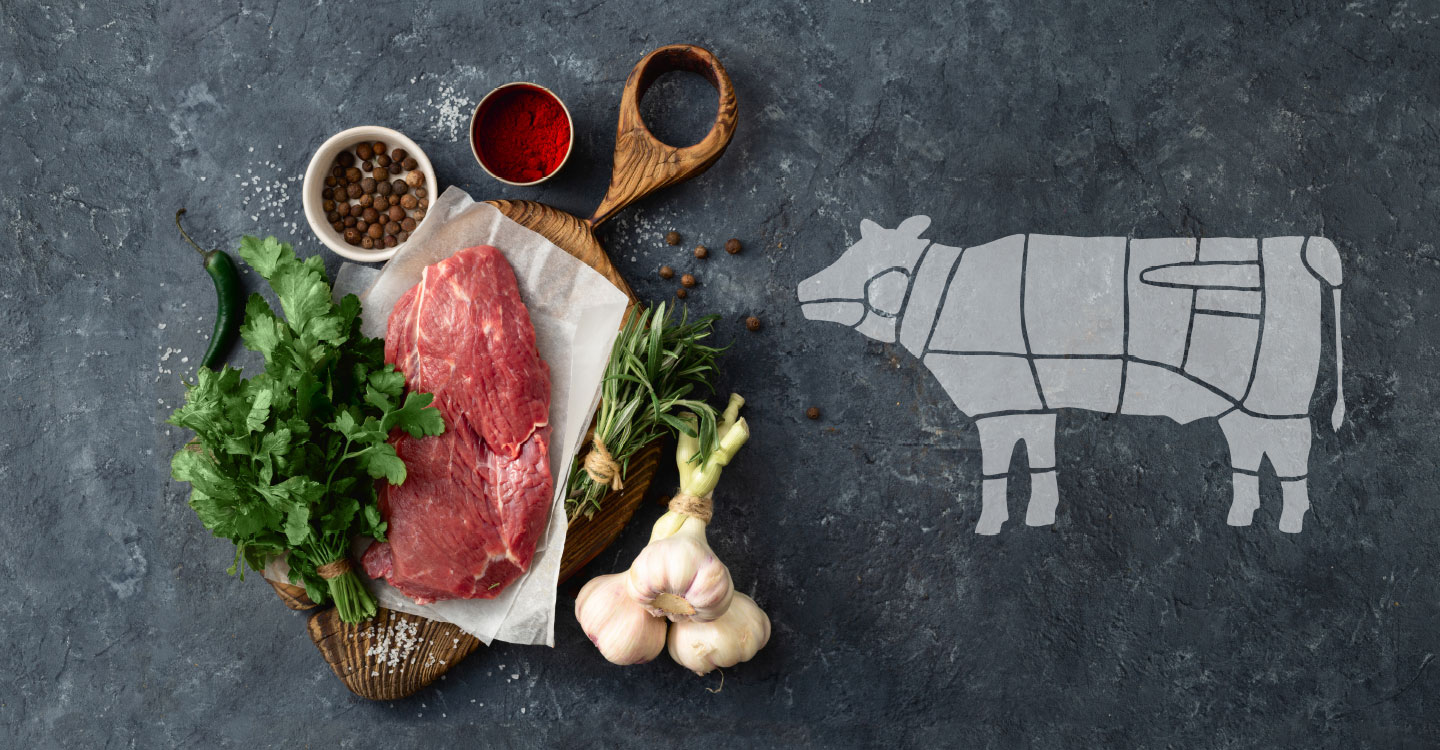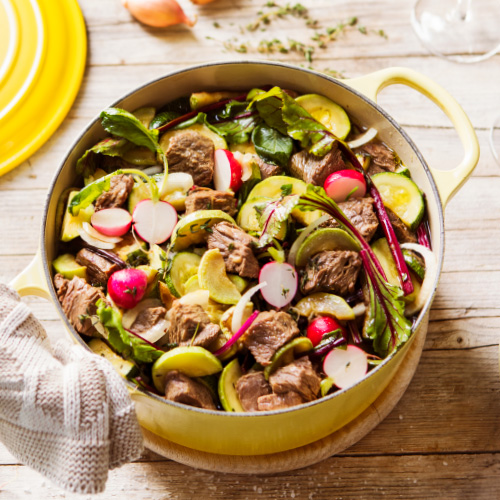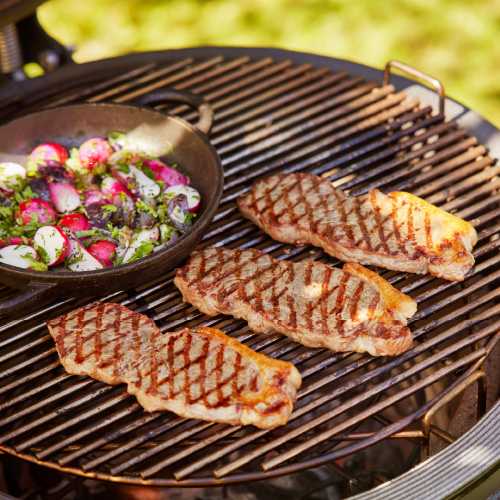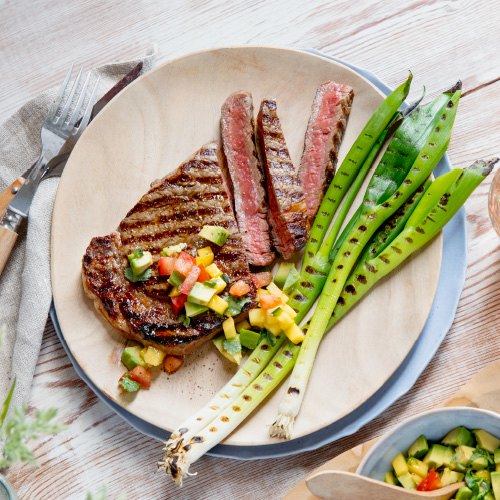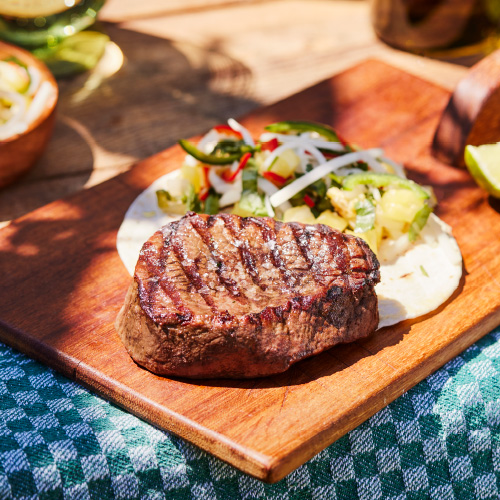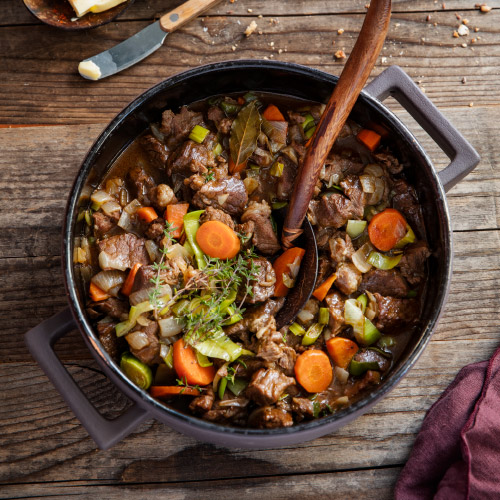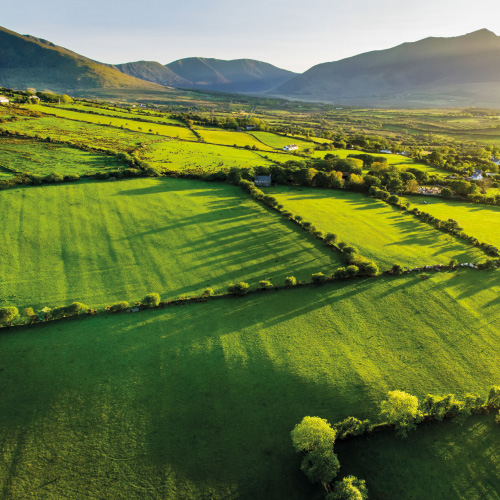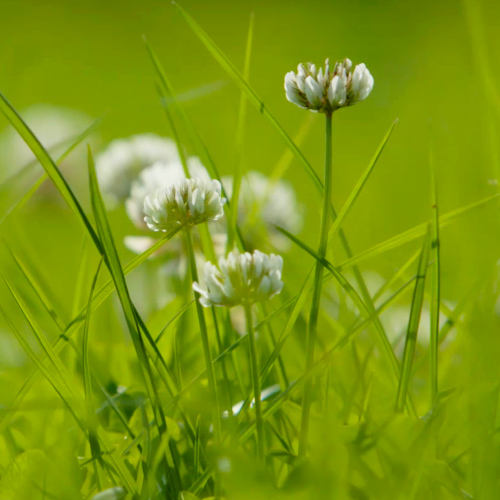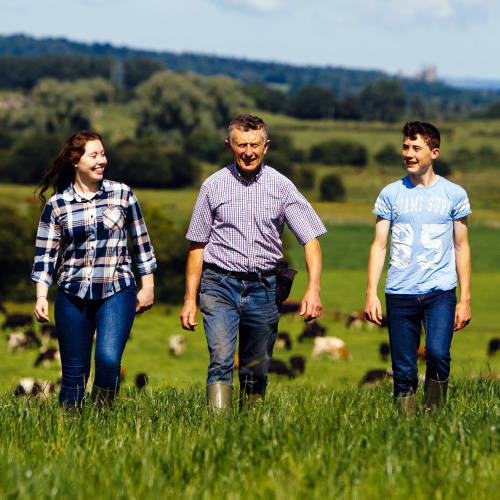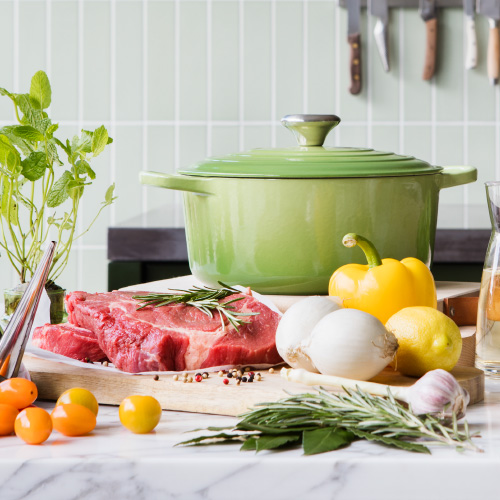Biefstuk, entrecote, stoofvlees… Wat zit waar bij de koe?
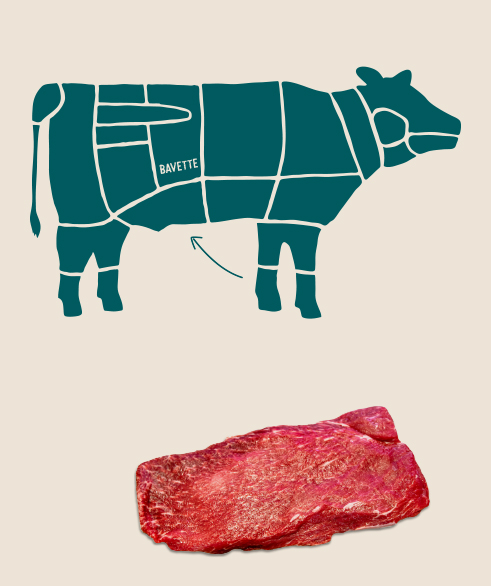
Bavette
Bavette is een smakelijke steak die afkomstig is uit de achterkant van de buik van de koe. Het is een stuk dat hard heeft moeten werken gedurende het leven van de koe en hierdoor is de structuur grover en de smaak intenser. Bavette heeft een opvallend grove, lange draad. De bavette heeft een intense steak smaak, maar kan een beetje taai zijn. Daarom raden we je aan om het in dunne stukken te snijden/eten. Uiteraard gesneden tegen de draad in.
Bereiding: rauw, bakken of grillen, ± 4-6 minuten

Biefstuk
Biefstuk wordt gesneden van de bovenbil, het spierstuk of de dikke lende. Het is een mals stukje vlees!
Bereiding: Biefstuk bakken of grillen, ± 3-5 minuten
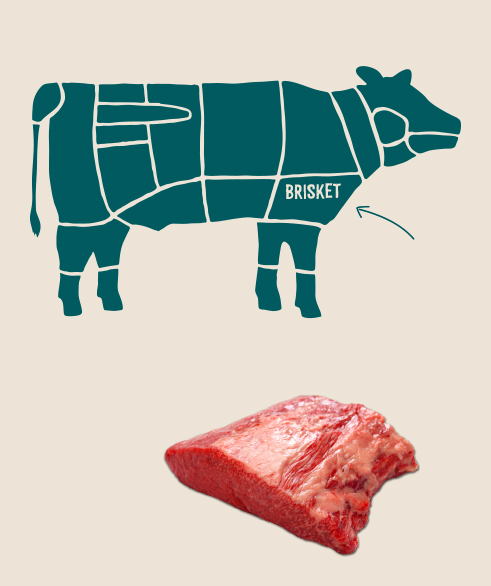
Brisket
De brisket is het borststuk van een rund. Een stuk vlees wat in Nederland voorheen niet veel werd gesneden, maar waarvan de populariteit toeneemt. Het vlees bevat nogal veel pezen, hierdoor is het vrij taai. De brisket wordt low&slow bereid op een barbecue of in een smoker. Deze techniek kunt u een beetje vergelijken met het stoven van vlees. Door garing op lage temperatuur wordt het collageen omgezet in gelatine en verandert een taai stuk vlees in een botermalse lekkernij.
Bereiding: barbecue, 8-10 uur
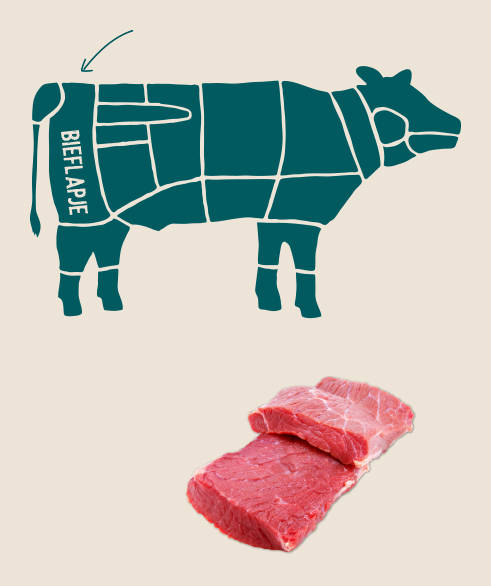
Bieflapje
Bieflappen of baklappen worden van magere rundvleesdelen gesneden. Het vlees kan zowel gaar als rosé gegeten worden.
Bereiding: bakken of grillen, ± 5-10 minuten

Entrecote
Entrecote is een premium gesneden stuk rundvlees van de dunne lende dat een klein vetrandje heeft. Als je het vetrandje wilt verwijderen, doe dit dan pas ná het bakken. Het randje zorgt er namelijk voor dat het vlees heerlijk mals blijft.
Bereiding: bakken, ± 6-8 minuten
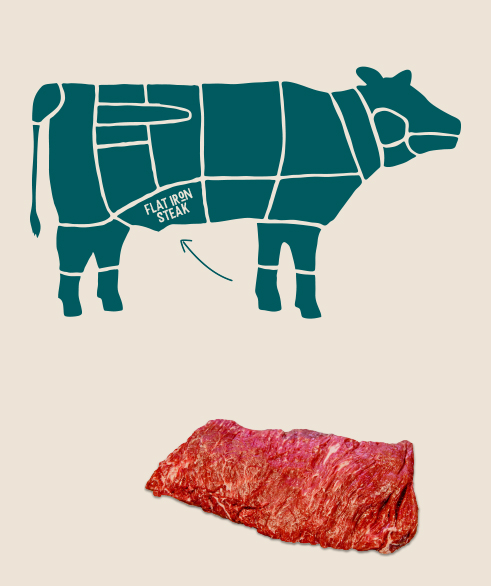
Flat iron steak
Flat iron steak is sukade, maar dan zonder de pees en als steak gesneden. Een flat iron steak leent zich goed om te marineren en grillen. Grill het vlees wel indirect, en op een iets lagere temperatuur. Hierdoor verkoolt de buitenkant niet en wordt de binnenkant goed verwarmd.
Bereiding: barbecue of grill, ± 4-6 minuten
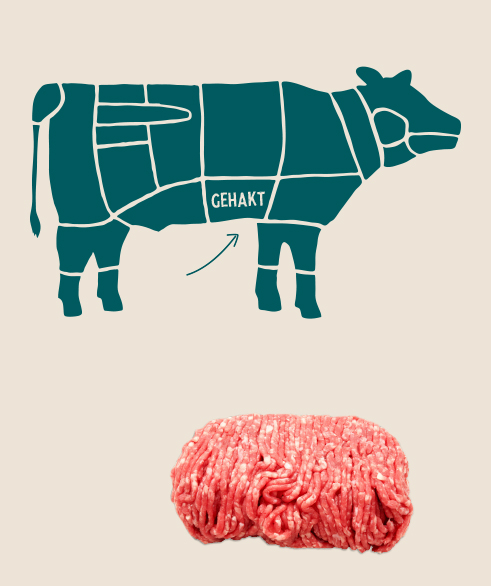
Gehakt
Gehakt is gemalen vlees dat afkomstig kan zijn van meerdere delen van de koe. Rundergehakt mag maximaal 25 gram vet per 100 gram vlees bevatten, mager rundergehakt maximaal 15 gram. Gehakt is ook te koop onder de naam half-om-half (of halfom), dat wil zeggen dat het gehakt deels uit rund- en deels uit varkensvlees bestaat.
Bereiding: bakken als je het rult (5 minuten) of braden, als je er ballen van maakt (15-20 minuten).

Hacheevlees
Hacheevlees is rundvlees met een grove vleesdraad, geschikt voor stoofgerechten. Het vlees moet op lage temperatuur langzaam gaar gestoofd worden totdat het zo zacht is dat het min of meer uit elkaar valt.
Tip: Maak je stoof 1 dag van tevoren, dan wordt het vlees nog zachter en smaakvoller.
Bereiding: stoven, ± 120-240 minuten
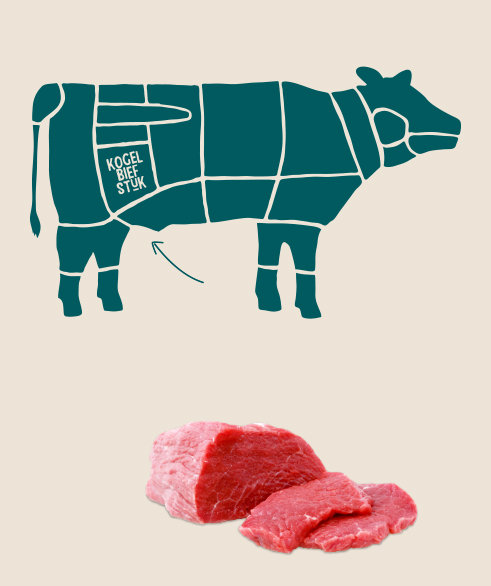
Kogelbiefstuk
Kogelbiefstuk komt uit het zachtste deel, de kogel, van de bovenbil. Daardoor is het nog malser dan gewone biefstuk en superlekker om rare of medium rare te eten.
Bereiding: bakken, ± 3-5 minuten
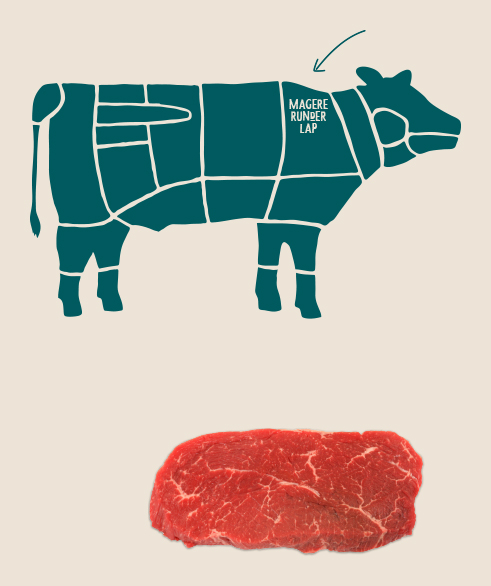
Magere runderlap
Runderlappen komen niet specifiek uit één deel van het rund, maar wel altijd uit het voorste deel. Runderlappen hebben minder vet en zijn dus net iets magerder dan ander stoofvlees.
Het wordt ook wel ‘draadjesvlees’ genoemd. Als je het stooft wordt het zo zacht dat het in draadjes uit elkaar valt.
Bereiding: stoven, ± 120-240 minuten
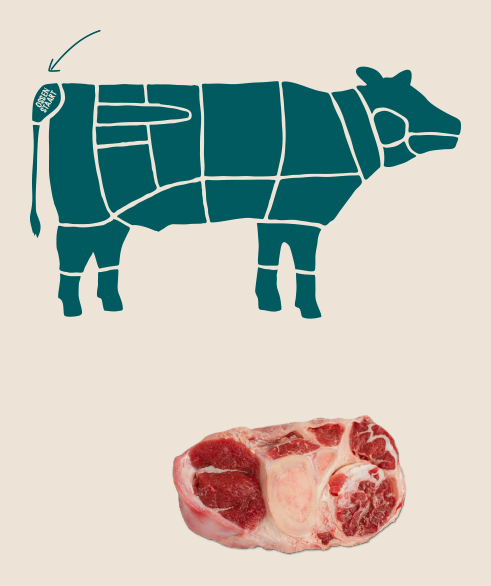
Ossenstaart
Dit is het staartgedeelte. Gebruik de ossenstaart om bouillon van te trekken of maak er een stoofschotel van. De lekkerste bouillon maak je door de stukken ossenstaart eerst door de bloem te halen en aan te braden met een kruidenbuiltje. Laat de ossenstaart daarna gaarkoken. Zo ontstaat een mooie, bruine bouillon.
Bereiding: koken, ± 180 minuten
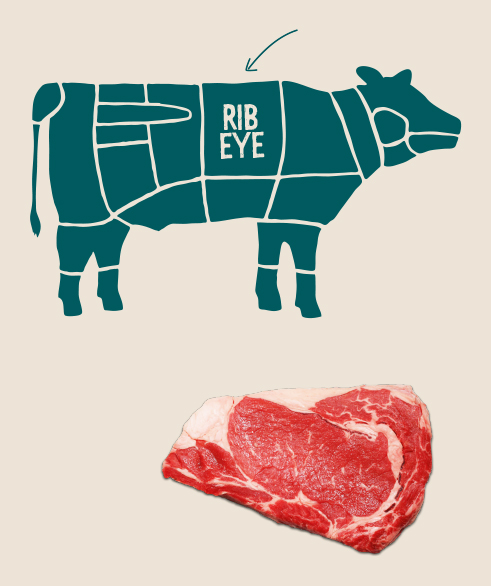
Ribeye
Ribeye komt van de rib van een rund, maar zonder het bot. Het wordt gezien als een soort biefstuk, maar het vlees is gemarmerd met vet. Het vetrandje loopt door het vlees heen, met een beetje fantasie lijkt het op een oog. Vandaar de naam ribeye. Een ribeye is door dat randje midden in het vlees wat vetter, maar ook super mals.
Bereiding: bakken, ± 4-6 minuten
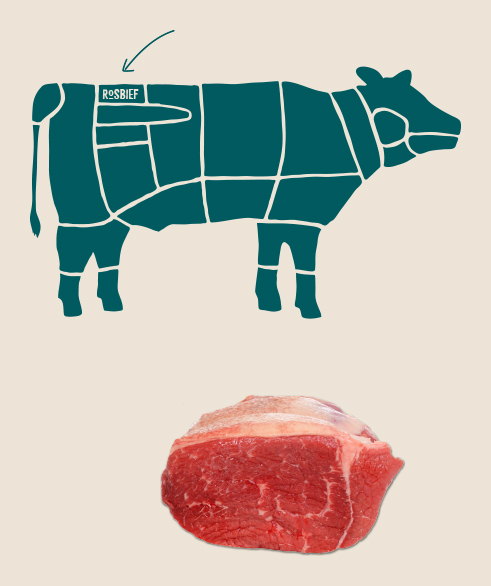
Rosbief
Rosbief is een groot stuk rundvlees gesneden van een mager spierdeel van het rund, de dunne of dikke lende, het staartstuk, de bovenbil, de platte bil, het bloemstuk of de muis. Na bereiding moet het vlees binnenin nog rosé zijn. Snijd het vlees altijd in dunne plakken, de smaak van het vlees is dan optimaal.
Bereiding: braden, ± 25-30 min.
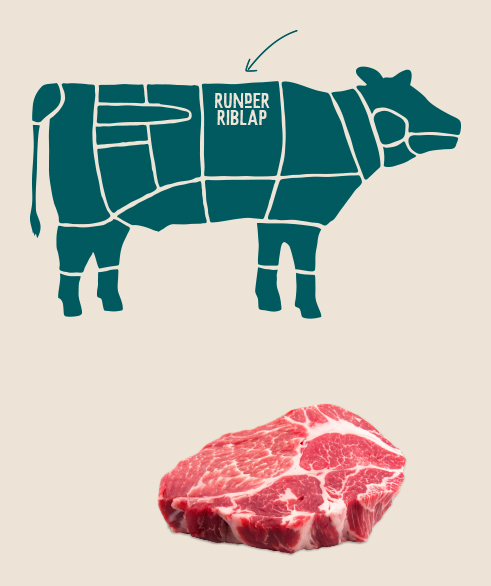
Runderriblap
Riblappen vind je tussen de ribben van het rund. Ze zijn de meest malse stooflappen en het snelst te bereiden (vergeleken met runderlappen of sukade). Door iets zuurs (bijvoorbeeld azijn of wijn) aan het stoofvocht toe te voegen is het vlees sneller zacht.
Bereiding: stoven, ± 150-180 min.
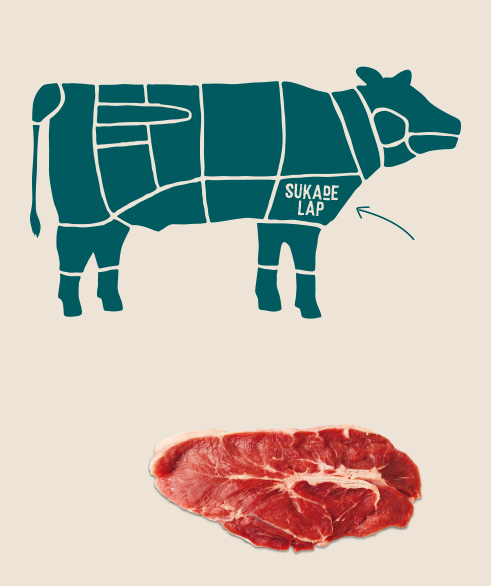
Sukadelap
Sukadelappen worden gesneden van de schouder van het rund. Er loopt een witte pees door het vlees. Door het vlees te stoven zal de pees zacht worden, het vet smelten en krijgt het vlees zijn boterzachte smaak en typische structuur.
Bereiding: stoven, ± 120-240 min.
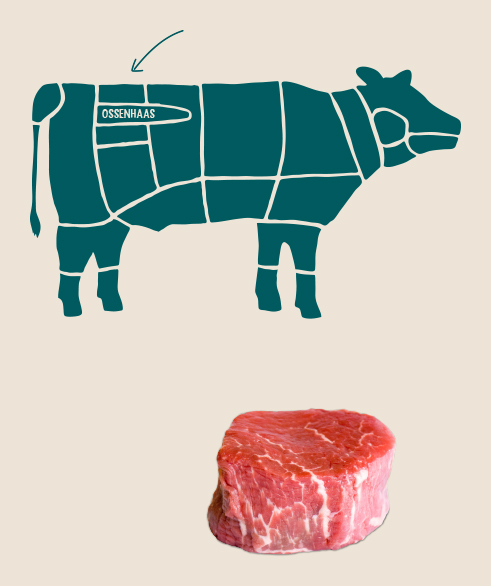
Tournedos / ossenhaas
Ossenhaas is het meest malse en mooiste deel van het rund. Het wordt ook wel biefstuk van de haas of tournedos genoemd.
Bereiding: bakken, per centimeter dikte bak je ongeveer 1 minuut voor een stuk rood vlees, 2 minuten voor rosé en vier minuten voor doorbakken vlees.
Waarom Iers rundvlees?
In Ierland is geen gebrek aan dat ene speciale ingrediënt dat voor geweldig Iers rundvlees zorgt: gras. Een Iers rund loopt gemiddeld 220 dagen per jaar, 24 uur per dag buiten in uitgestrekte weilanden en eet dan… gras! Het buitenleven en grasdieet zorgt voor gewoon buitengewoon rundvlees, lekker mals met een intense vleessmaak.
